Walter Taylor and his bridge
By Simon Miller, Library Technician, State Library of Queensland | 13 February 2016
The Indooroopilly Toll Bridge, now known as the Walter Taylor Bridge, was opened on February 14, 1936. The bridge was the crowning achievement of the innovative contractor, engineer and builder Walter Taylor who was the driving force behind the project. The Governor, Sir Leslie Orme Wilson, made mention of Walter Taylor's many roles in the project at the official opening of the bridge.
Paying a tribute to the work of Mr. Walter Taylor, his Excellency said: "It is absolutely unique in Australia, I am sure, that one man could have held the positions of promoter of the scheme, director of the company, engineer, contractor for the bridge and secretary of the company. A great writer said: "I regard as happy the man who, when the question of success arises, looks into his work for a reply." Mr. Taylor can look on his work, and he will get ample reply, for he will realise that his work has been good." Courier Mail 15 February 1936
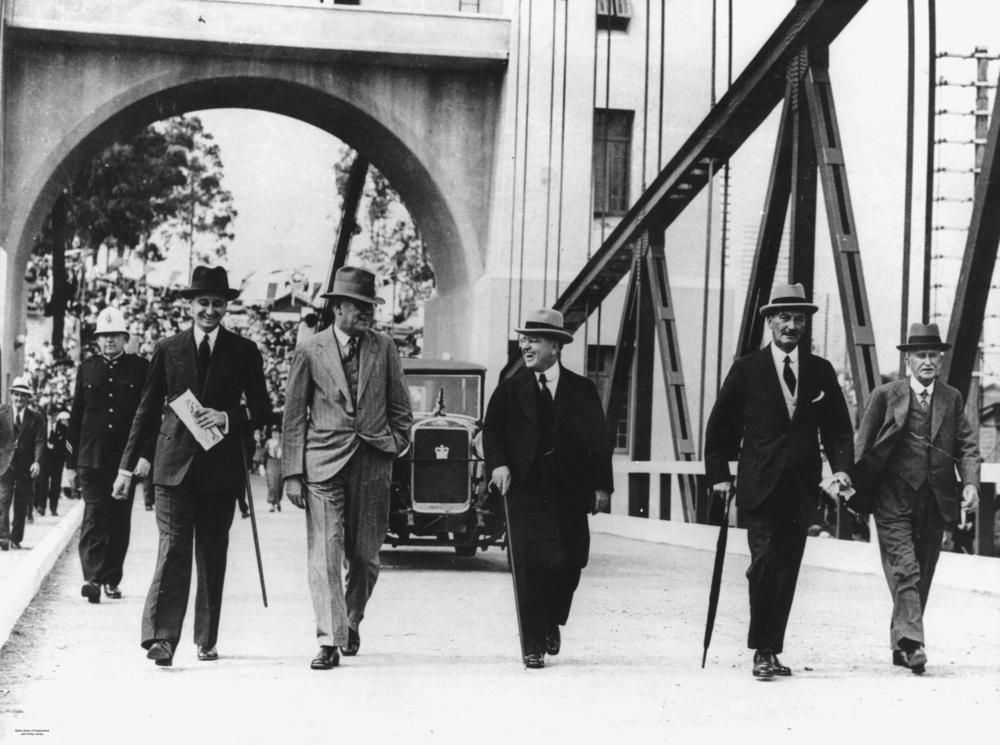
Walter Taylor first came to Queensland in 1884 with his parents and numerous brothers and sisters. Walter was then a boy of 12 and embarked on some fairly haphazard schooling but apparently turned out to be a fair scholar. He first headed for a career in journalism with the Brisbane Telegraph but left the paper to work with his father who was a building contractor. In 1899 he was working with his father and two brothers on an engine shed at Roma Street Station when his father was killed in a fall from the roof.
Walter married Louisa Braun in 1900 and their only child Thelma was born in 1901. In 1902 Walter took his family to England where he hoped to attract interest in some of his inventions. He worked in a construction business in England and invented a number of Fair rides. Unfortunately his partners in the business embezzled funds from the company and Walter was forced to start again. Walter almost certainly made a study of the new process of reinforced concrete construction while in England and when he returned to Queensland in 1912 he made extensive use of the new technique.
Walter Taylor was contractor on a wide variety of building projects before tackling the bridge that now bears his name. In 1923 and 1924 he built several multi-story warehouse buildings in Edward Street constructed of brick with reinforced concrete floors. These buildings, Invicta House and Pioneer House are still in use.
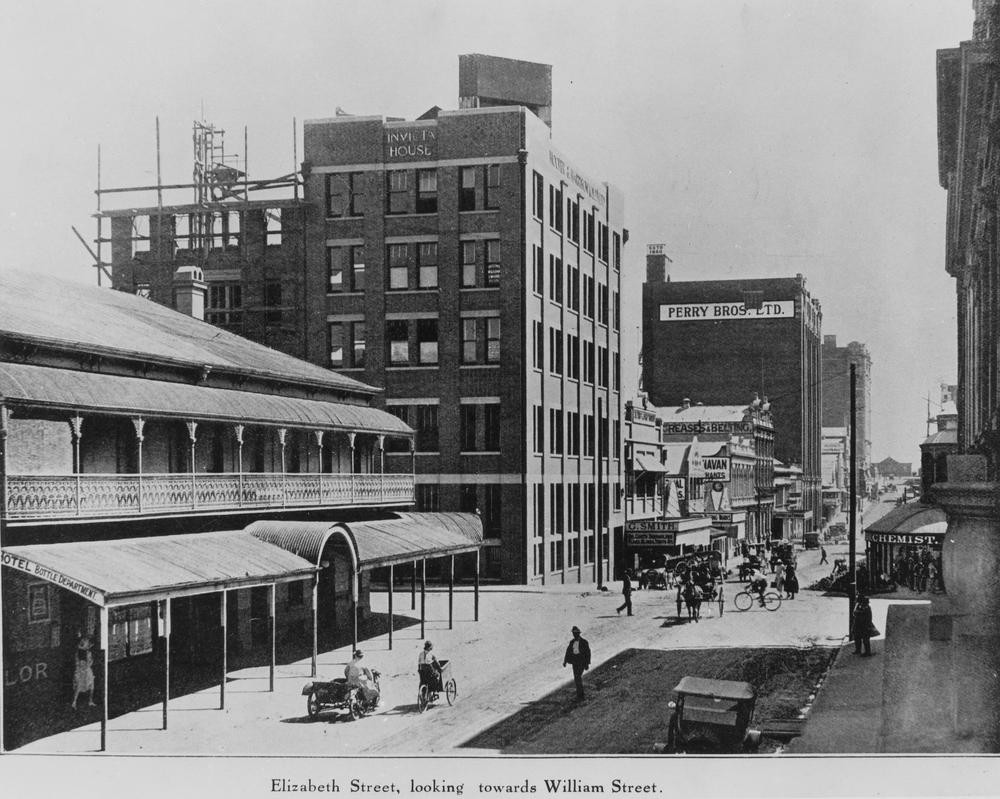
Invicta House on the corner of Edward and Elizabeth Streets in 1924 with Pioneer House under construction next door
Other landmark buildings built by Walter Taylor that are still in use include the Craigston Flats in Wickham Terrace, built in 1928, and the Tristrams soft drink factory in West End now redeveloped as The Markets Shopping Centre.
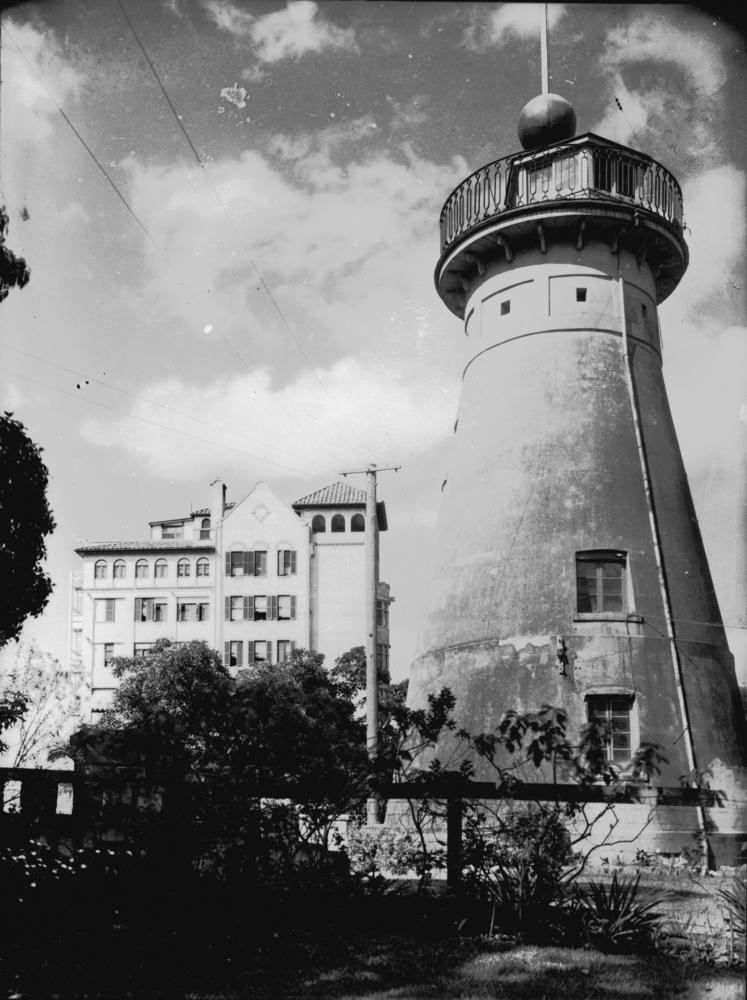
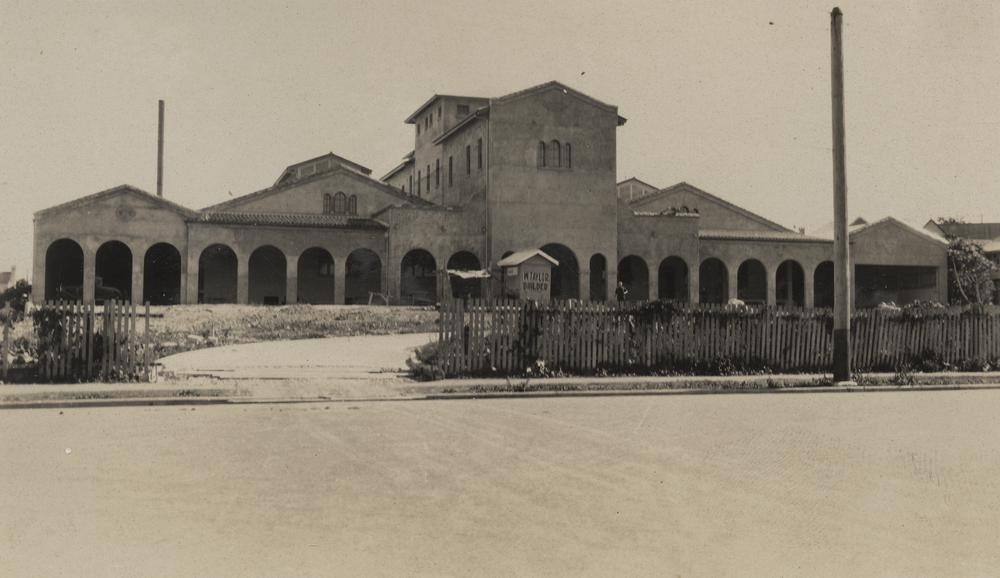
Walter Taylor was a devout Methodist as his father had been. His older brother Albert had trained as a Methodist minister and he officiated at both Walter's wedding and that of his daughter Thelma in 1927. When Walter returned to Queensland he had settled in Graceville and was a leading light in the local Methodist community. Walter built the Sherwood Methodist Church in 1914, shortly after his return to Australia and in 1928 offered to design and build a new church in Graceville. He developed his own pre-cast concrete system for the construction of the church, a radically different technique to the conventional methods of the time. This beautiful church, now the Graceville Uniting Church, was the project closest to Walter's heart and his will left provision to pay off the remaining depts from the building's construction. This building has been listed by the Australian Heritage Commission as a building of national heritage significance and is on the Queensland Heritage Register.
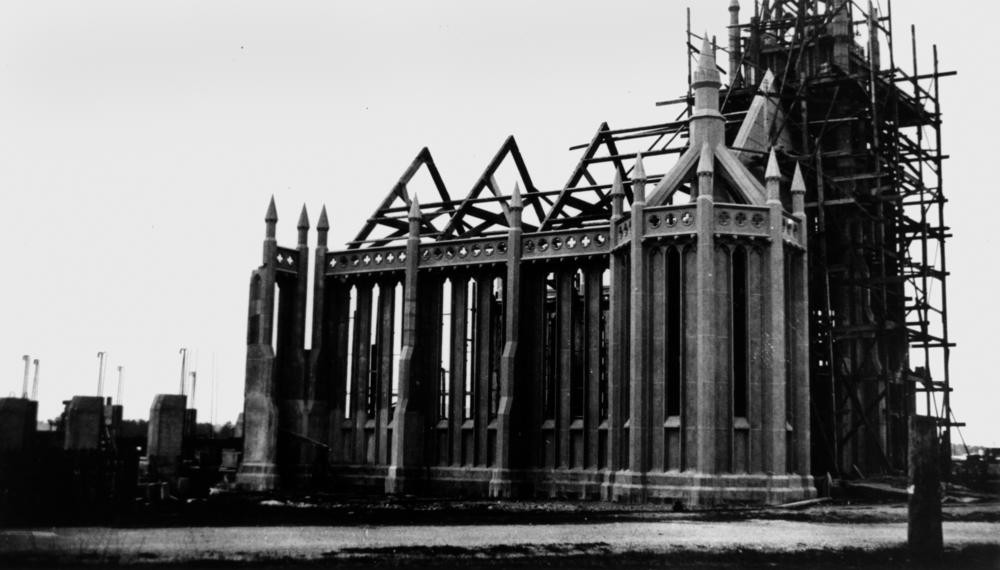
Walter Taylor's crowning achievement is undoubtedly the bridge that now bears his name. There had been various proposals for a road bridge across the Brisbane River between Chelmer and Indooroopilly for some time. In 1924 Taylor was elected President of the Graceville Progress Association and in the same year he submitted a design for a bridge constructed of reinforced concrete to a meeting of representatives of the Ipswich Town Council and Chamber of Commerce. In May 1925 the Greater Brisbane Council formed a Cross River Commission and Walter Taylor appeared before the commission and again proposed his design for a new bridge.
In 1931 Walter Taylor submitted a new design for consideration of the Queensland Government. Inspiration for the design had come from consideration of the construction of the Sydney Harbour Bridge. Until the separate arms of the bridge met up they had been held in place by great steel cables which were then removed once the arms were connected. Taylor would use the cables that were no longer required for the Sydney bridge to build a suspension bridge in Brisbane. This was the Great Depression and the government had no money for building bridges but they would pass legislation to enable private construction payed for by the collection of tolls. The Indooroopilly Toll Bridge was the second privately funded road bridge built under this legislation after the Redcliffe viaduct. The prospectus of Indooroopilly Toll Bridge Limited was issued in 1931. William Herbert Green, prominent businessman and philanthropist also a Methodist lay preacher, was Chairman of the company with Walter Taylor, Harold Foote, Ipswich businessman, and William Smillie, accountant, as the other directors.
Despite the Depression, Walter Taylor's drive and energy soon saw £75, 000 capital raised. Work began as soon as the company had sufficient funds to construct the Indooroopilly pylon with further work proceeding as funds became available. While test holes were being dug on the Indooroopilly side of the river gold ore was discovered at a depth of 48 feet. This was found to be a rich deposit and Walter Taylor took out mining leases on the area to prevent any potential miners from interfering with the construction of the bridge.
The bridge itself is of an unusual design based on a type invented by D.R. Steinman and used for a bridge in Florianopolis, Brazil opened in 1924. The Walter Taylor Bridge is the only bridge of its type in Australia. It is the longest span suspension bridge and is the only inhabitable bridge in the Southern Hemisphere with apartments and even a ballroom built into the piers at either end.
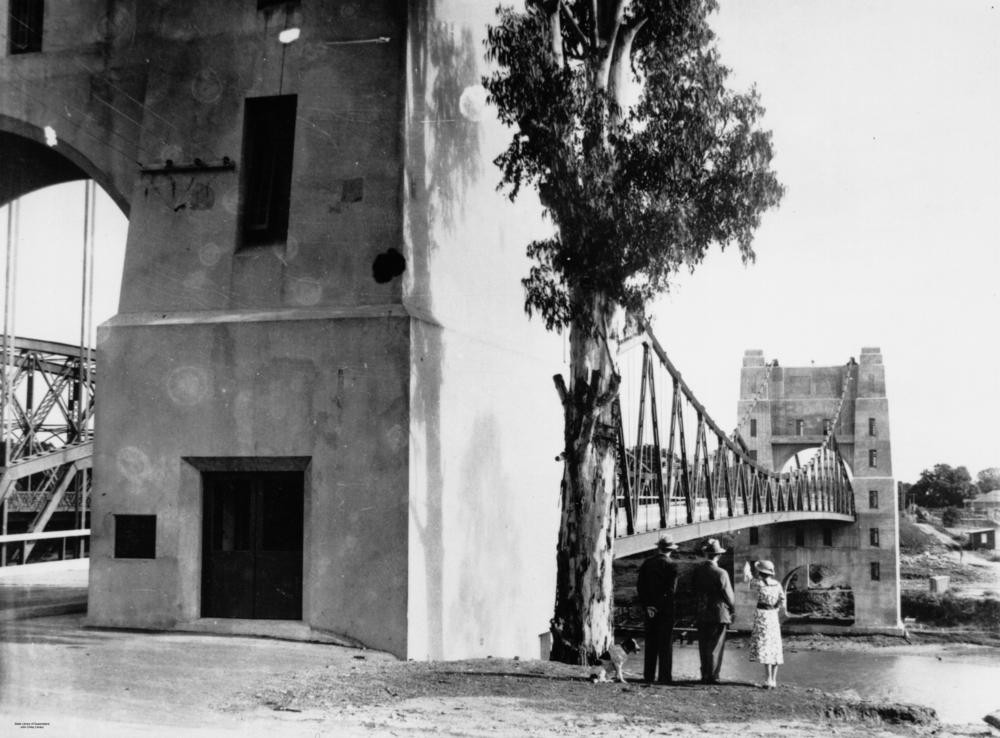
The Indooroopilly Toll Bridge Company were franchised to collect a toll on the bridge from 5 pm on 14 February 1936 when the bridge was opened for a period of 35 years until it was handed over the the Brisbane City Council in 1963. The first paying car over the bridge was driven by Mr M. R. Hornibrook accompanied by Walter Taylor. There was a scale of tolls from 1 penny for pedestrians and cyclists to 1/6 for trucks over three tons. Many of the toll keepers and their families lived in the bridge itself. The bridge pylons remained occupied until 2010.
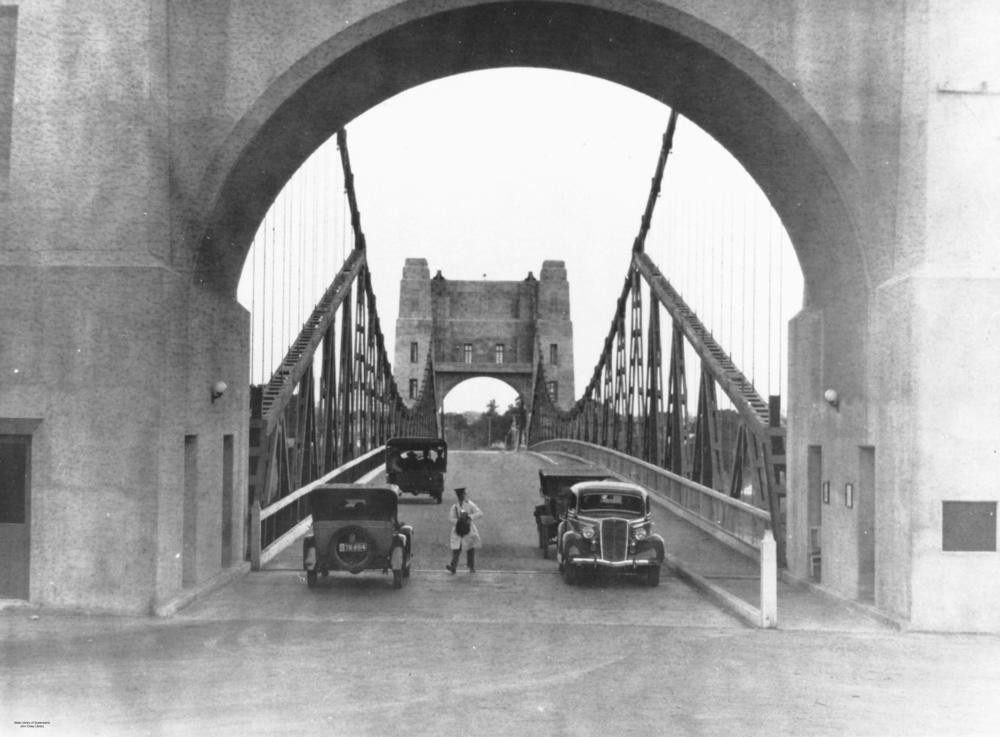
Walter Taylor died on 14 November 1955 at the age of 83. On Thursday 5 April 1956 the bridge was officially renamed The Walter Taylor Bridge.
References:
Indooroopilly Toll Bridge Limited. (1931). Prospectus / Indooroopilly Toll Bridge Limited. <Brisbane: S.n.>
The Indooroopilly toll bridge : A souvenir of the official opening day. (1936). <Brisbane: S.n.>.
O'Connor, C. (1998). Walter Taylor Bridge / C. O'Connor. <Brisbane: The Author.>
Davis, N., Cook, Margaret, Fones, Ralph, & Oxley-Chelmer History Group. (2011). The remarkable Walter Taylor / by Noel Walter Davis ; with articles by Margaret Cook and Ralph Fones and expert assistance from Colin O'Connor.. Sherwood, Qld.: Oxley-Chelmer History Group.
Simon Miller - Library Technician, State Library of Queensland
Comments
Your email address will not be published.
We welcome relevant, respectful comments.